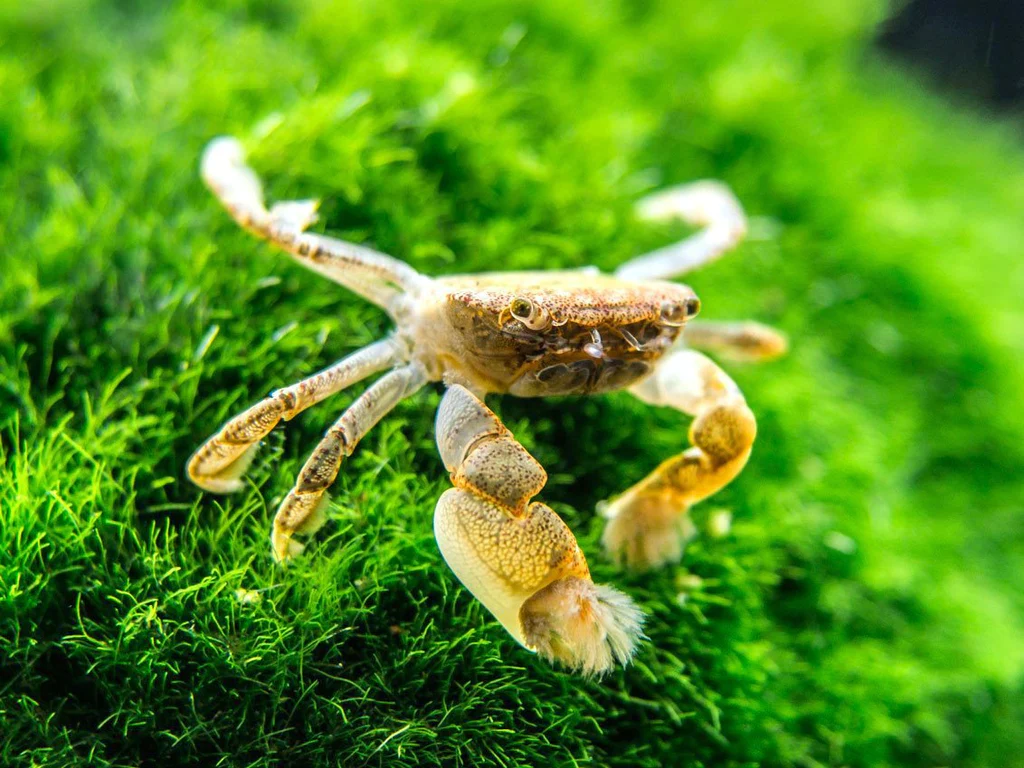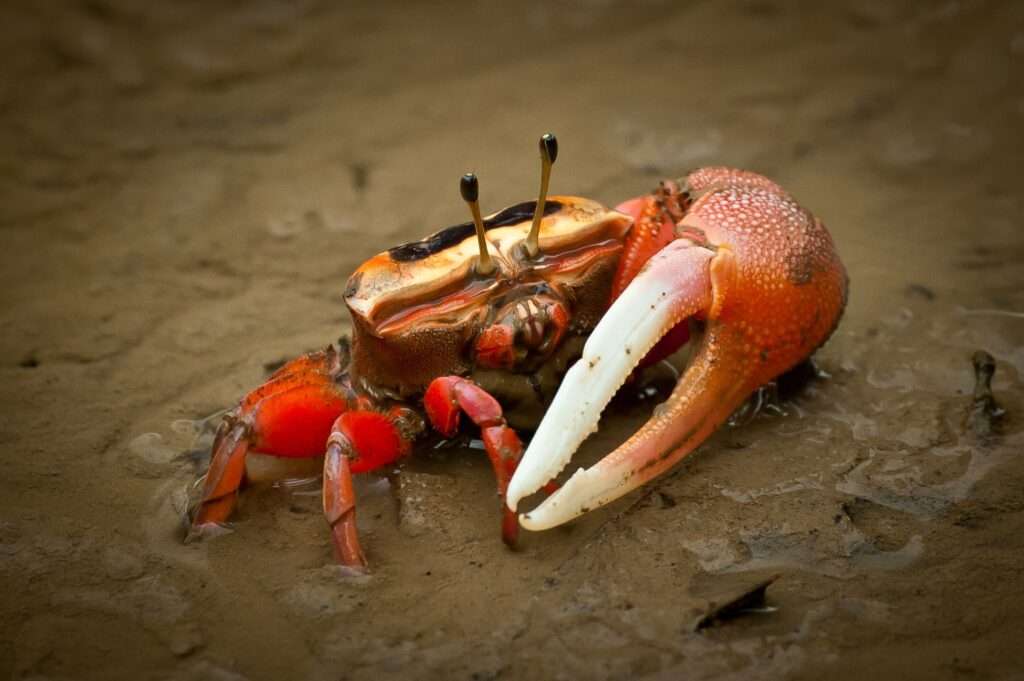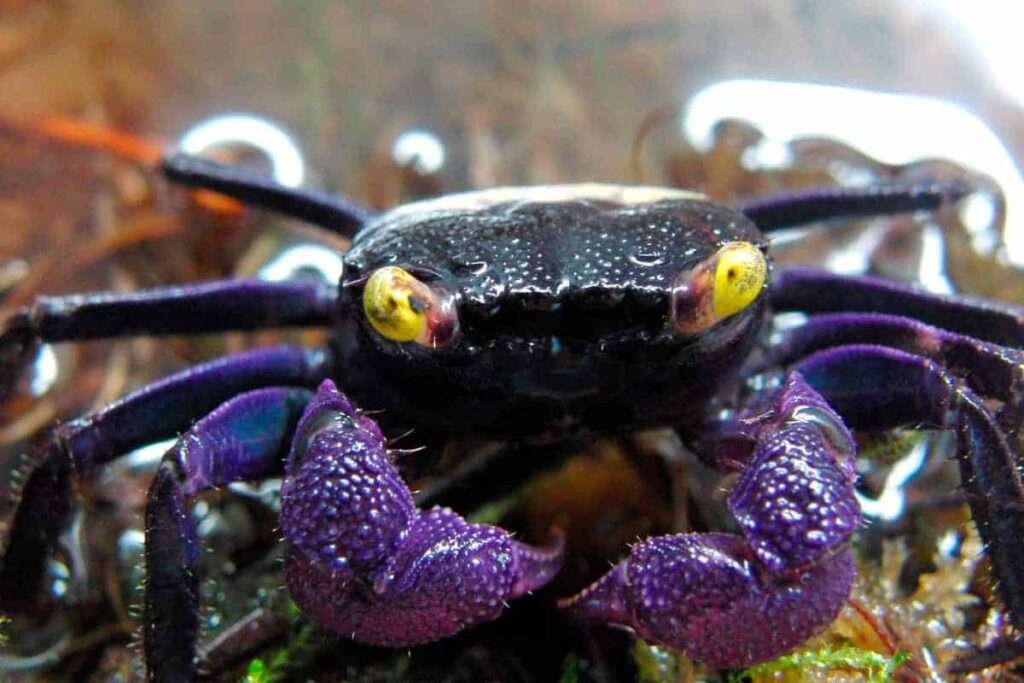
These crabs are known as cheerleading crabs because of the tiny hairy patches on their claws that give them the appearance of holding pom-poms. These tiny crabs can easily eat some algae because they can collect food with the help of these hairs.
Since they spend all of their time in the water and are known for escaping, it is advisable to maintain your water level low. You can take care of them fairly simply by feeding them and providing a healthy habitat.
They can be coupled with other crabs and some fish because of their placid disposition, which makes them suitable tank mates.
Many aquarists overlook the adorable and unusual freshwater Pom Pom crabs. These lively little creatures are fun to own and have a number of advantages for the tank’s general health.
However, there is still a great deal of uncertainty about their care needs. There is a lot we don’t know because the practice of keeping these crabs in aquariums is still relatively new.
Therefore, if you want the aquarium community to prosper, it is crucial that you get familiar with what they have learned thus far. We gathered all the knowledge about freshwater Pom Pom crab maintenance and put it in this manual to make things simple for you.
Appearance
The Pom Pom crab gets its name from the hair tufts that come out of its arms. They appear to be holding cheering pom poms because of the hairs that grow from the claw joint!
The bristles are very long and thick in males. They are seldom evident to females.
In addition to their distinguishing pom poms, these crabs exhibit other unusual morphological traits. For its size, the crab’s shell is fairly broad. In addition, the legs are long and slim.
The majority of specimens have a light yellow or brown tint. There may also be sporadic spots of a darker brown color.
It’s rather easy to distinguish between males and females.
Feed
Crabs called pom poms are adept scavengers. Additionally, they are opportunistic omnivores who will consume anything they can.
The idea that these crabs are filter feeders is a common one. While they undoubtedly occasionally get food in their hairs, they don’t remain still long enough to effectively filter feed.
This crab will instead search the aquarium for microbes, different kinds of algae, and plant debris to eat.
They also voluntarily consume dry, processed foods. On a regular diet of dried flakes or pellets, you can keep them in good health. Bloodworms and juvenile brine shrimp are acceptable occasional protein-rich snacks.
If there are other fish in the tank with the crabs, you’ll also notice that they are consuming any remaining food.
Keeping as Pet in a Tank

Tank Size
Starting with tank size a tank with a minimum capacity of five gallons can accommodate a tiny colony of Pom Pom crabs. But instead of doing this, we advise using a 10-gallon aquarium for your comfort and wellbeing. You can keep a bigger colony in a 10-gallon tank while giving these active crabs more space to roam.
Water Conditions
It is yet unclear what kinds of water this crab prefers. Fortunately, this crab is resilient and does well in a variety of environments. Keep your crab within these water parameters to ensure its happiness and wellbeing.
- Water is between 68°F and 78°F (above 72 degrees is ideal)
- pH ranges from 6.2 to 7.2
- Water hardness: 30 dKH or less (lower is better)
Tank companions
Pom Pom crabs are wonderful since they are tolerant of other animals in the tank. They don’t give a damn what their fellow tank mates are doing! You will scarcely notice any interaction or acknowledgment from them as long as their tank mates don’t interfere with their way of life. Most calm freshwater fish, crabs, snails (preferably moderate-sized ones), and shrimp are compatible with pom pom crabs. With cherry shrimp, amano shrimp, and bamboo shrimp they prosper.
Table





